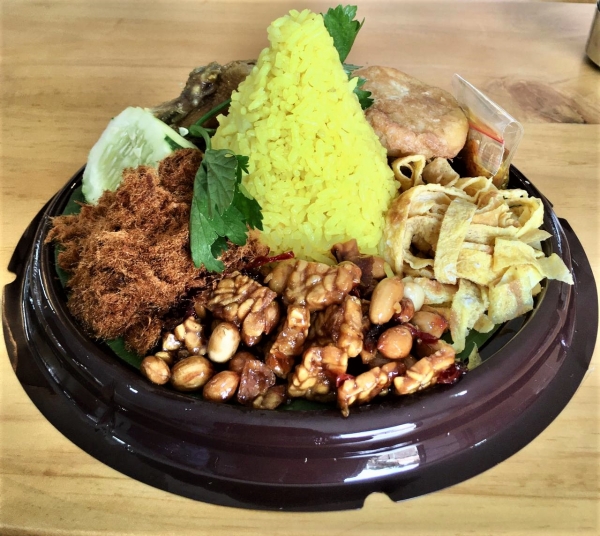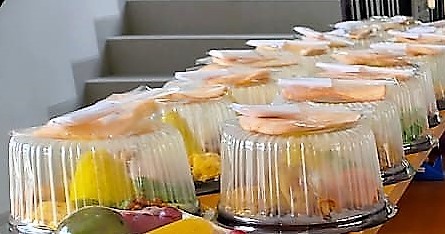Cone-shape Yellow Rice
The cone-shaped yellow rice or in our language called Tumpeng Nasi Kuning. People in Java, Bali and Madura usually make tumpeng to celebrate important events. However, all Indonesians are familiar with tumpeng. The philosophy of tumpeng is related to the geographical condition of Indonesia, especially Java as fertile island with numerous mountains and volcanos. Tumpeng dates back to ancient Indonesian tradition that revered mountains as the abode of hyangs, the spirit of ancestors and gods. The cone-shaped rice meant to mimics the holy mountain. The feast served as a thanksgiving for the abundance of harvest or any other blessings. While yellow rice is a symbol of good fortune, wealth, and dignity. The cone-shape yellow rice is usually accompanied by various side dishes. There is a philosophical meaning on every part of traditional tumpeng. According to folklore in Java and Bali, the cone-shaped tumpeng is a mystic symbol of life and ecosystems. It also symbolizes the glory of God as the Creator of nature, and the side dishes and vegetables represent the life and harmony of nature. The authentic and complete tumpeng dishes should contain at least one meat to represent a land animal, fish to represent sea creatures, an egg to represent winged beasts, and vegetables that represent a food stock provided by the plant kingdom. Usually, tumpeng is served with spinach as spinach is a traditional symbol of prosperity in Javanese agricultural society. Today, most Indonesians serve tumpeng as a dish to celebrate a special occasion, such as a birthday party, family or neighbourhood gathering, farewell party, celebrations, recitals, and many other joyous events. Because of its festive and celebration value, up until now tumpeng sometimes seen as an Indonesian counterpart of birthday cake The photos are mini tumpeng that we had for my office warming. Usually, we have one big cone-shaped yellow rice and we share with others, but because of the pandemic COVID 19 we asked the catering to make individual mini cone-shaped yellow rice, so we did not have to share it.
Author Withheld (Age out of range)






